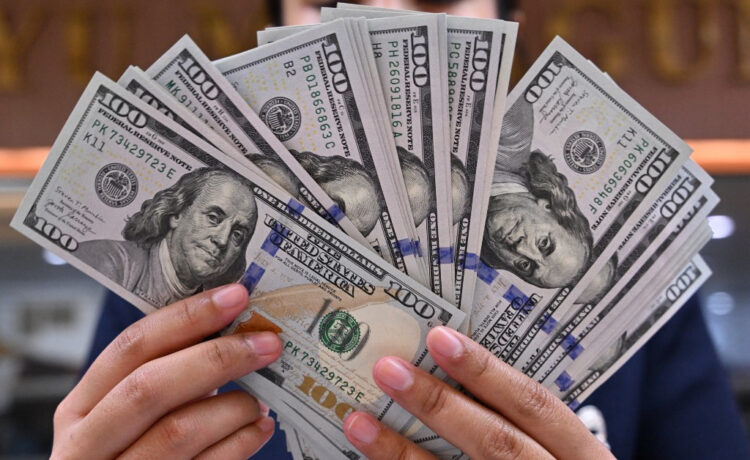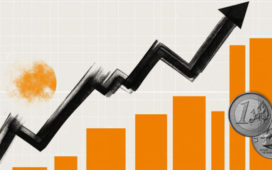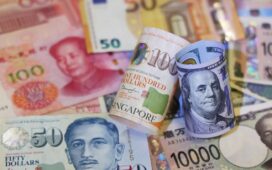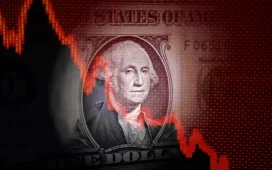he dollar was losing ground again on Monday as a meteoric surge in its Taiwanese counterpart spilled over elsewhere, fueling speculation some Asian countries were prepared to engineer revaluations to win US trade concessions.
The Taiwan dollar climbed more than 3 percent to 29.618 per US dollar, adding to a record 4.5 percent jump on Friday and taking it to two-year highs.
While Taiwan’s central bank has denied the White House was pressing for a rise in some Asian currencies as part of a trade deal, markets were sensing a shift anyway.
China’s yuan duly hit its highest in almost six months at 7.1980 per dollar as investors wagered Beijing might let its currency strengthen as part of Sino-US trade talks, though negotiations still seemed distant.
While the Chinese Commerce Ministry has indicated Beijing was evaluating an offer from Washington to hold talks over Trump’s 145 percent tariffs, the two sides still seem far apart.
In a TV interview aired on Sunday, President Donald Trump reiterated that he believed China wanted to do a deal, but offered no details or timeline.
Trump did say he would not attempt to remove Federal Reserve Chair Jerome Powell, but also repeated calls for lower interest rates and called the Chair a “stiff”.
The Fed meets on Wednesday and is widely expected to leave rates steady following a solid March payrolls report.
“The labor report leaves little doubt that the FOMC will keep rates on hold this week, and the bar for cutting is now even higher for June,” said Michael Feroli, head of US economics at JPMorgan.
“In a period of high uncertainty, with two-sided risks to the dual mandate, the Fed Committee will prefer to remain patient until there is more clarity in the outlook.”
Markets now imply only a 37 percent chance of a Fed cut in June, down from 64 percent a month ago. Goldman Sachs and Barclays both shifted their cut calls to July from June.
Yet it was notable the dollar had only got a limited lift from the jobs data and was struggling to keep the gains, with turnover in Asia thinned by holidays in Japan and China.
The euro edged up 0.3 percent to $1.1333, and away from last week’s low at $1.1266, while the dollar index dipped 0.2 percent to 99.717.
The dollar eased 0.4 percent to 144.21 yen, and away from Friday’s top around 145.91.
Japanese Finance Minister Katsunobu Kato walked back comments that seemed to suggest Japan might threaten to sell some of its Treasury holdings as part of trade negotiations with the White House, which are due to continue this week.
A QUESTION OF TRUST
The abrupt swings in US policy combined with pressure on the Fed’s independence have shaken investor trust in the dollar, which was still clearly evident in positioning.
Many investors are still wagering on further dollar weakness with speculative short positions rising further in the latest week, though that also leaves the market vulnerable to a squeeze on any bullish news.
The next hurdle for the dollar will be the ISM survey of services due later on Monday, with a risk a weak reading would revive worries about an economic downturn.
For sterling the major test this week will be a Bank of England meeting on Thursday where it is widely expected to cut rates a further 25 basis points to 4.25 percent, and perhaps signal faster easing ahead.
“The reaction in UK gilts and GBP will come from the guidance and whether the door is sufficiently opened for a back-to-back cut at the June meeting, and whether there is the appetite expressed in the statement to ease the bank rate to 3.50 percent by December,” said Chris Weston, head of research at Pepperstone.
Central banks in Norway and Sweden also meet this week and are expected to keep rates steady.
Down Under, the Australian dollar held firm in the wake of Saturday’s election which saw the Labor party’s Anthony Albanese claim a historic second term as prime minister.
The Aussie edged up to $0.6466, having hit a five-month high after the US jobs report boosted risk appetite globally.






